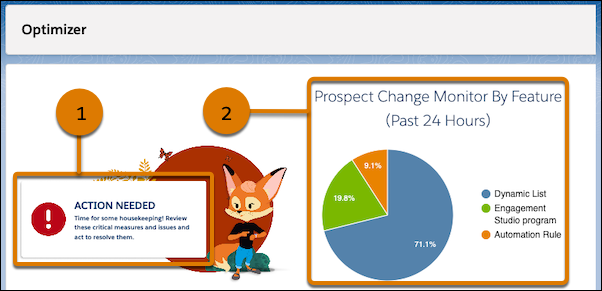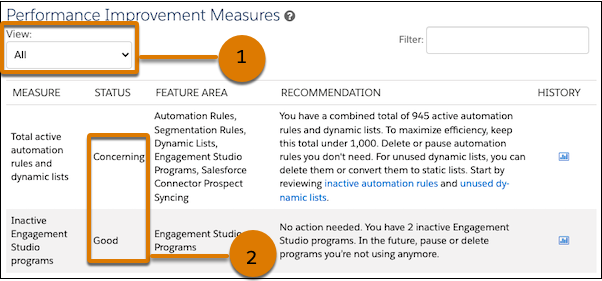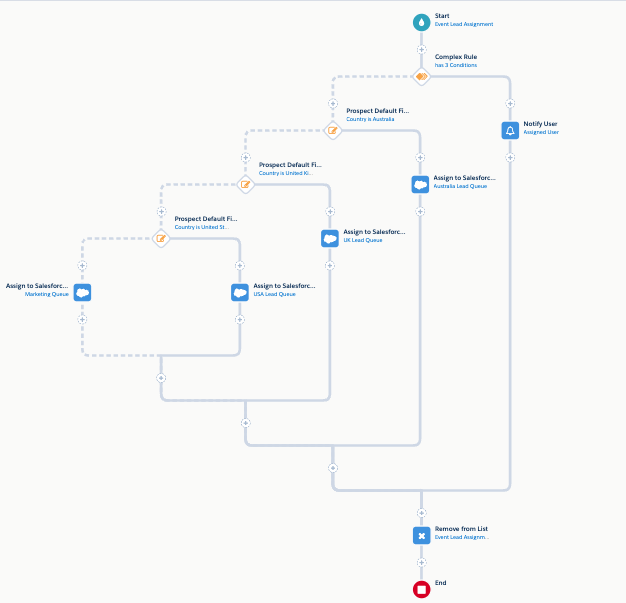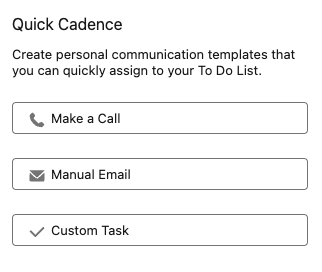Summer ‘23: 10 Hottest Account Engagement (Pardot) Updates
- April 25, 2023
- Pardot External Actions, Pardot Releases, Salesforce Ben | The Drip

The Salesforce Summer ‘23 release notes have arrived (all 615 pages)!
In terms of Account Engagement (Pardot), this release is all about making improvements to the functionality that we already have – from enhancing external action usage, to Account Engagement Optimizer, lists, and the infamous opted-out field – there’s plenty for us to read and absorb.
Earlier this year, the tide turned between Pardot and its new name, Account Engagement (hopefully, you’re getting used to the name updates within your user interface?). Again, the release notes explicitly refer to ‘Account Engagement Settings’ (versus the now defunct ‘Pardot Settings’).
Depending on your Salesforce instance, Summer ‘23 will arrive for you either early May, or the first two weeks of June 2023. Check your own release dates below:
After looking through the release notes, here are the hottest new features for Marketing Cloud Account Engagement (Pardot)…
1. Completion Actions + External Actions
Completion actions are one type of Account Engagement (Pardot) automation that fires each time a prospect makes an activity on a marketing asset. You add completion actions to each individual email, form, landing page, page action, or custom redirect. However, once you add a completion action, the action will fire blindly – which is why conditional completion actions were introduced.
Now, we can bring more power to completion actions. Previously, external actions could be triggered via Engagement Studio, but with Summer ‘23 you can trigger external actions with completion actions.
You may wonder how you would use this? Say a prospect completes a form, you can register them immediately for a webinar that’s hosted on a third-party platform, like Zoom. Or, you could send an SMS after they click a specific link (custom redirect). Plus, there are many more use cases to explore.
See Trigger an External Action After a Prospect Engagement in the release notes.
2. Prospect Change Monitor
As part of the Account Engagement Optimizer (more on this in point #3), you can now understand what’s driving prospect data changes.
What’s eating up processing power within your account/business units? You may find that you need to adjust automations and/or API integrations.
For example, are dynamic lists weighing you down (i.e. prospects entering and/or leaving the lists)? Or what about the number of prospects that automation rules are processing?
By using the time filter, you can get a glimpse of the usage; for example, in the image below, we see that in the past 24 hours that around 400 prospects have been processed by dynamic lists, which accounts for 71%+ automation processing in our account.

Personally, I think this is a call-out feature because we’ve never had this level of insight before. Let’s keep a pulse on the impact that our changing prospects’ data has in the big picture.
See Monitor the Source of Prospect Changes in the release notes.
3. Account Engagement Optimizer (Generally Available)
Optimizer gives you the big-picture view for each of your business units. If items need your attention, they’ll be flagged, plus you’ll be presented with proactive recommendations to take action quickly. You can view and manage a list of suggested actions in a table, and prioritize by urgency and potential impact on your org.
You may be familiar with Salesforce Optimizer, and thought: “Why doesn’t Pardot (Account Engagement) have something equivalent?” – well, here you go! We first met the Account Engagement Optimizer page in the Spring ‘23 release (when it was in beta), and now, in Summer ‘23, becomes generally available.

There are additional features since the beta version:
- Prospect Change Monitor: Understand which features result in the most prospect changes (see point #2).
- Configuration Issues: Diagnose and treat setup problems that are blocking your access to features.
- The Performance Improvement: Includes good/concerning measures so that you can see what’s working well in your business unit. For example, total active automation rules and dynamic lists should be kept below 1000. If you’re edging up against that recommendation, you will be scored ‘concerning’ for that measure.

Navigate to: Pardot Settings → Account Settings → Performance sub-tab.
See Keep Your Account Engagement Business Unit Running Smoothly with Optimizer (Generally Available) in the release notes.
4. Control Opted-out Field Sync Behavior
How much one field impacted the community was a sight to be seen. After the opted-out field was restricted to “Use Pardot’s value” or “Use Salesforce’s value” – i.e. must have a designated system of record, admins were disgruntled that they could no longer use “Use the most recently updated record” to determine the sync behavior between Account Engagement and Salesforce. You only need to read this thread on the Trailblazer Community to see how much of an impact this had.
Based on the many people that provided feedback, the product team has now (once again) allowed the most recently updated field value as a source of truth for this critical field.
See Use a New Opted Out Field Status in the release notes.
5. Data Cloud (CDP) + Pardot (Account Engagement)
Whether you know this Salesforce offering as Customer 360 Audiences → Salesforce CDP → Marketing Cloud Customer Data Platform → Genie → Data Cloud… The good news is that we, Account Engagement (Pardot) admins, can now tap into Data Cloud. Data Cloud (i.e. CDP) handles the data unification, identity resolution, and activation that’s not possible otherwise.
The number of integrated data sources the average organization uses is increasing year on year. You only need to see the snapshot below from the Salesforce “State of Marketing” report.
Data Cloud (CDP) has been known to better suit “transactional purchases”; therefore, a tendency to be associated with B2C marketing. However, B2B marketing organizations are also moving in the direction of adopting CDP; a sizable proportion (31%) of marketers struggle to execute account-based marketing (ABM) due to the lack of a unified view of customer data.
Originally a B2C challenge, B2B marketers should take profile unification seriously, too. In Summer ‘23, CDP (Data Cloud) comes together with Account Engagement (Pardot) by creating the Account Engagement Connector in Data Cloud.
- Improve personalization based on all interactions a customer has with your organization.
- Use Account Engagement to nurture, send emails, and market to your Data Cloud customers.
- Create dynamic lists in Account Engagement based on Data Cloud segments to directly market to your Data Cloud customers.
See Use Data Cloud Segments in Account Engagement in the release notes.
6. Tracking Cookies Added After Consent
A question on many people’s minds when it comes to website tracking – what happens before a visitor/prospect gives their consent to website tracking? We now have a straight answer that complies with privacy: Tracking cookies are now added retroactively after a prospect confirms consent. (Previously, tracking cookies were added before a prospect clicked the consent banner and then deleted if they didn’t consent).
See Get First-Touch Attribution When Visitors Consent to Tracking in the release notes.
7. Convert Dynamic Lists → Static Lists
Dynamic lists are beneficial in many scenarios – after all, having a list that automatically adds/removes prospects according to how their data changes can keep your segmentation on the pulse.
As we saw in point #2, automation (like dynamic lists) can eat up processing power within account/business units.
If there are dynamic lists that were once beneficial, but you no longer need them to be ever-changing, then you can convert them into static lists. Static lists contain the selected prospects in the list, but won’t automatically add/remove them according to criteria.
This is also beneficial when paired with Engagement Studio – remember that which prospects are in the Engagement Studio program is dependent on who’s in the starting list (drop out of the list, drop out of the Engagement Studio program). This conversion will give you some predictability into program membership.
After converting from dynamic → static, you will need to manually add/remove prospects from the list (one-by-one, or by a mass select action in the list).
See Convert Unused Dynamic Lists to Static Lists in the release notes.
8. Share Assets Between Business Units
When you create an email template, Engagement Studio program, or custom redirect (or, upload a file) in one business unit, there’s little value-add in having to recreate it in another business unit.
With Salesforce Flow + the Account Engagement API V5 (‘Copy Account Engagement business unit assets’) you can automate that process. You will need assistance from someone who understands development (i.e. can work with the API), but with their help, you will be able to find and create assets as needed.
Copy email templates, files, Engagement Studio programs, and other assets from one business unit to another.
See Copy Assets Between Account Engagement Business Units More Easily in the release notes.
9. Account Engagement API v5
As always, there are new and updated objects for the API v5. Salesforce have been working on improving the Account Engagement API v5 over the past couple of years, to not only bring it up to parity with previous versions, but to align with modern integration best practices. Summer ‘23 delivers:
- Bulk Action API
- Object Folder Mapping
- Enhanced Prospect Query: Querying by Email and Salesforce ID to simplify retrieving the Prospect ID.
- New Engagement Studio Program Endpoint
- Import – Assign User ID or Owner ID
- V5 Permanent Deletion
- Copy Account Engagement Business Unit Assets
See Account Engagement API: New and Changed Items in the release notes.
10. Misc. Updates
- trust.pardot.com is moving: The ‘Trust’ site gives you critical information on service performance and when new releases will become available for your Salesforce org, but also known issues affecting customers beyond your region. Where Account Engagement (Pardot) customers will receive updates regarding their account is moving from trust.pardot.com to status.salesforce.com on May 1, 2023. To use this site, it’s important that you are aware of what instance you’re on.

- Email Report Print Count/Forward Fields Removed: Current and historical counts aren’t retrievable by Account Engagement because the fields have been deprecated.
- Validate Sandbox Custom Domains: Salesforce validates that the domain points to the org from which the sandbox was cloned. This also applies to Account Engagement (Pardot) sandboxes.
- The new ‘Engagement History’ field: There’s a new field added to the Sales Engagement offering (add-on to Sales Cloud). This is a chart showing all outbound activities and inbound engagement for the past 30 days. Don’t get confused – it’s not related to Account Engagement Engagement History.
This Pardot article written by:
Salesforce Ben | The Drip
Lucy Mazalon is the Head Editor & Operations Director at Salesforceben.com, Founder of THE DRIP and Salesforce Marketing Champion 2020.
Original Pardot Article: https://www.salesforceben.com/the-drip/summer-23-hottest-marketing-cloud-account-engagement-pardot-updates/
Find more great Pardot articles at www.salesforceben.com/the-drip/
Pardot Experts Blog
We have categorized all the different Pardot articles by topics.
Pardot Topic Categories
- Account Based Marketing (ABM) (7)
- Business Units (14)
- ChatGPT / AI (3)
- Completion Actions (5)
- Connectors (10)
- Custom Redirects (4)
- Data Cloud (2)
- Demand Generation (8)
- Dynamic Content (6)
- Einstein Features (12)
- Email Delivery (17)
- Email Open Rates (3)
- Pardot A/B Testing (2)
- Email Mailability (16)
- Do Not Email (1)
- Double Opt-in (2)
- Opt Out / Unsubscribe (14)
- Email Preferences Page (6)
- Engagement Studio (16)
- Industries (1)
- Non Profit (1)
- Landing Pages (9)
- Lead Generation (1)
- Lead Management (13)
- Lead Routing (3)
- Lead Scoring (16)
- Leads (3)
- Marketing Analytics – B2BMA (9)
- Marketing Automation (1)
- Marketing Cloud (3)
- Marketing Cloud Account Engagement (4)
- Marketing Cloud Growth (2)
- New Pardot Features (6)
- Opportunities (2)
- Optimization (2)
- Pardot Admin (64)
- Duplicates (1)
- Marketing Ops (1)
- Pardot Alerts (1)
- Pardot API (2)
- Pardot Automations (3)
- Pardot Careers (12)
- Pardot Certifications (4)
- Pardot Consulting (1)
- Pardot Cookies (3)
- Pardot Custom Objects (3)
- Pardot Email Builder (8)
- Pardot Email Templates (9)
- HML (6)
- Pardot Events (16)
- Pardot External Actions (1)
- Pardot External Activities (4)
- Pardot Forms (29)
- Form Handlers (8)
- Pardot Integrations (20)
- Data Cloud (1)
- Slack (1)
- Pardot Lead Grading (5)
- Pardot Lead Source (2)
- Pardot Lightning (1)
- Pardot Migration (1)
- Pardot Nurture / Drip Campaigns (1)
- Pardot Personalization (3)
- Pardot Profiles (1)
- Pardot Releases (18)
- Pardot Sandboxes (2)
- Pardot Segmentation (5)
- Pardot Strategy (7)
- Pardot Sync (2)
- Pardot Sync Errors (1)
- Pardot Tracker Domains (5)
- Pardot Training (3)
- Pardot Vs Other MAPs (4)
- Pardot Website Tracking (2)
- Reporting (22)
- Salesforce and Pardot (31)
- Marketing Data Sharing (2)
- Pardot Users (3)
- Salesforce Automation (5)
- Salesforce Flows (2)
- Salesforce Campaigns (20)
- Salesforce CRM (3)
- Record Types (1)
- Salesforce Engage (3)
- Salesforce Queues (2)
- Security and Privacy (1)
- Tags (3)
- The Authors (504)
- Cheshire Impact (9)
- Greenkey Digital (51)
- Invado Solutions (37)
- Jenna Molby (9)
- Marcloud Consulting (6)
- Nebula Consulting (60)
- Pardot Geeks (44)
- Salesforce Ben | The Drip (235)
- SalesLabX (3)
- Slalom (4)
- Unfettered Marketing (46)
- Uncategorized (1)
- Website Tracking (2)
- Website Search (1)
More Pardot Articles
See all posts
This Pardot article written by:
Salesforce Ben | The Drip
Lucy Mazalon is the Head Editor & Operations Director at Salesforceben.com, Founder of THE DRIP and Salesforce Marketing Champion 2020.
Original Pardot Article: https://www.salesforceben.com/the-drip/summer-23-hottest-marketing-cloud-account-engagement-pardot-updates/
Find more great Pardot articles at www.salesforceben.com/the-drip/





